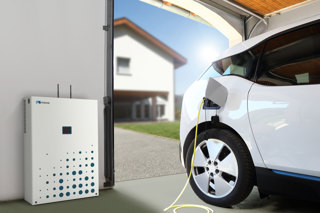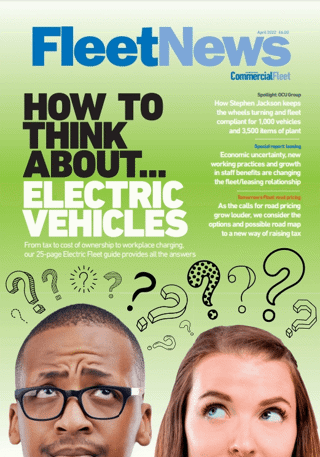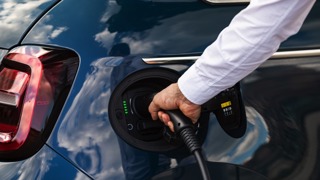By Dan Martin, managing director - fleet and workplace charging at Mer UK
Following the Government’s announcement in 2020, which ordered the phase out of new petrol and diesel cars and vans by 2030, businesses should have immediately started planning to change the way they operate.
With the deadline less than eight years away, in addition to the Government’s latest proposal to legislate that 50% of automakers’ sales must be electric by 2028, the pressure on companies to act is growing.
Despite this, I still have discussions with fleet operators who are apprehensive about the implementation of electric vehicles (EVs) into their businesses.
They argue that petrol and diesel vehicles provide more range and are cheaper, while the charging infrastructure still has a way to go to be convenient for drivers.
Yes, the cost of buying an EV is, on average, 22% more than the conventional equivalent.
However, the cost to charge a fleet of EVs at dedicated commercial charge points is far lower than refuelling a fleet of petrol or diesel vehicles.
Petrol prices are rising at their fastest rate for 30 years, almost 58% more expensive than the global average.
Despite price hikes across the board, electric remains the cheapest power source.
EVs are also exempt from any road taxes and are at least 30% cheaper to service and maintain than petrol and diesel equivalents.
Over three years, the potential of savings for fleets that switch to EVs is substantial and this will only increase as the price gap between EVs and petrol and diesel vehicles closes.
At the end of March, there were approximately 30,412 public EV chargers and 5,497 rapid and ultra-rapid charging devices across the UK, representing a 33% growth since March 2021.
More recently, as part of its £1.6 billion EV infrastructure strategy, the Department for Transport (DfT) has invested an extra £450 million to build 300,000 charging stations by the end of 2030.
In addition, Mer now offers 530 public charging stations and thousands of commercial charging stations, following the acquisition of Elmtronics.
We have seen a 44% year-on-year (YoY) growth in demand for charging infrastructure, illustrating the rapid growth of the market.
The installation and management of on-site charge points is imperative to fleet businesses and workspaces.
For fleet operators, this will allow them to charge commercial vehicles overnight, at the lowest price, ready for use the next day.
For workspaces, integrating new EV charging infrastructure provides valuable support to EV owners who may not have access to home charging.
It is one thing spending money on a large fleet of EVs, but it is another thing building the appropriate infrastructure to enable future success.
Whatever the propulsion, the idea of switching your fleet can be daunting.
However, if fleet managers work with EV charging companies like Mer, they will unlock new areas of opportunity much quicker than they think.
The aim is to make the process simple for businesses, understanding their existing operations to better support the rollout of bespoke infrastructure.
New infrastructure also means new software, such as charging and fleet monitoring systems.
This offers more clarity for fleets, who can predict how long vehicles can remain in operation and how long they will be out of use when charging.
Vehicles have become smarter, and so has the supporting infrastructure, unlocking data that can improve efficiency and cost savings.
Organisations that have invested in electrification have positioned themselves at the front of the market, identifying that their future sustainability as a business is reliant on their environmental sustainability.
Winning contracts from private or public sector is at risk if businesses are unable to demonstrate progress in reducing their carbon footprint.
They are also aware of the amount of time it takes to switch fleets - usually at least three years - highlighting another challenge that will impact latecomers.
The proof of this is clear, with most supermarkets, couriers and large mobility services investing in EV fleets, not to mention the growing list of automakers who now offer EVs.
Scepticism about the ‘EV revolution’ is moot.
If these businesses continue to delay the inevitable, they will fall further behind a growing list of competitors looking to capitalise. Reluctance to change is not an option; it’s do or die.
> Interested in comparing electric vehicle data? Check out our EV tool.
> Interested in ensuring the efficient use of EVs. Check out our dedicated editorial sections: Insight & policy | EV news | Charging & infrastructure | Costs & incentives | Benefit-in-kind | EV case studies | EV road tests





















Login to comment
Comments
No comments have been made yet.